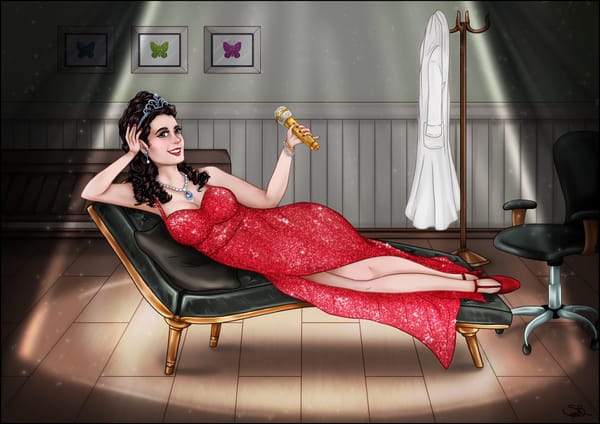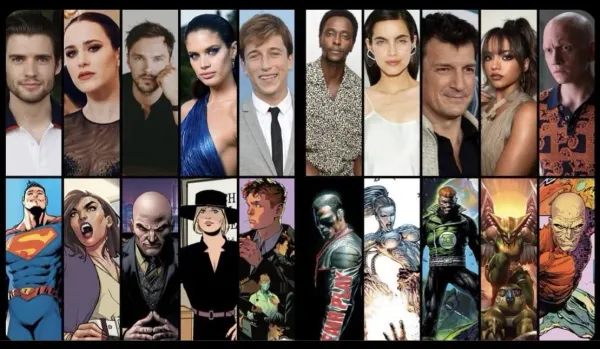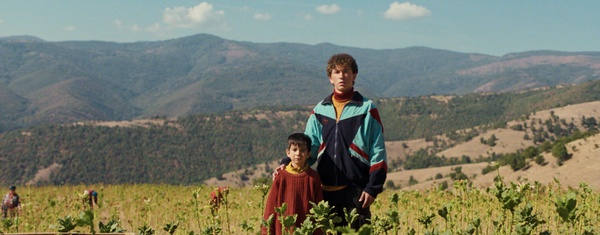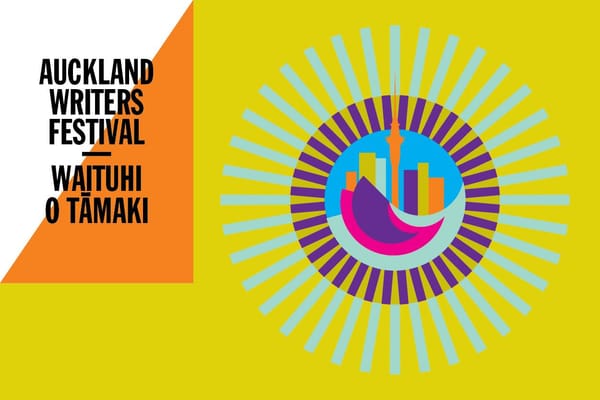I Didn’t Invite You Here To Interview Me
I Didn’t Invite You Here To Lecture Me is a comedy by Amy Mansfield, based on real lines from UoA lecturers. After debuting in living rooms, it opens at Q Theatre on May 21. I sat down with Amy and Mika to chat about the show.
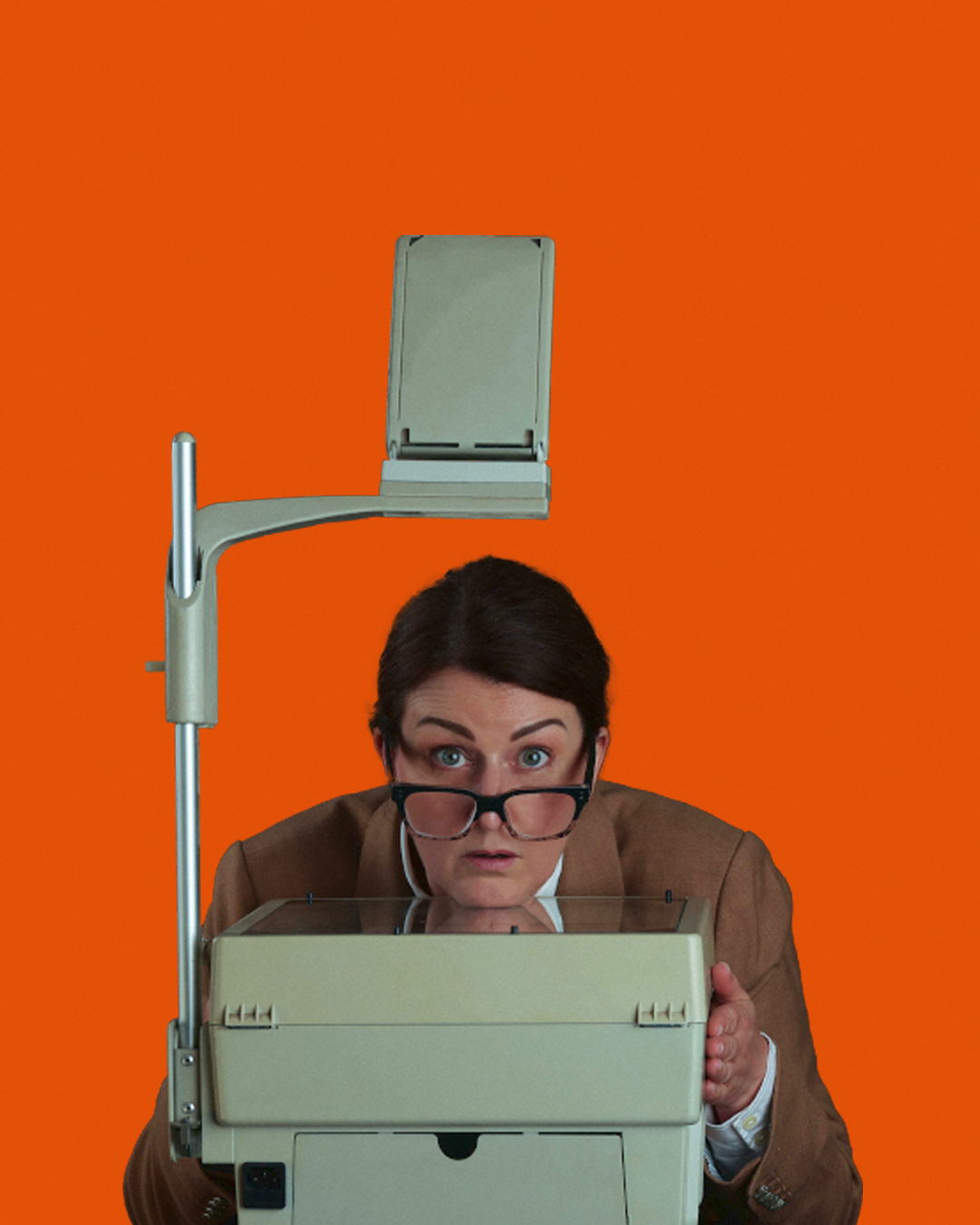
An interview with writer Amy Mansfield & actor Mika Austin about their upcoming comedy show I Didn’t Invite You Here To Lecture Me
I Didn’t Invite You Here To Lecture Me is a comedy written by Amy Mansfield. The show is based on real throwaway lines from UoA lecturers she wrote down verbatim during her time studying at the university. Having first been presented in neighbourhood living rooms, the show will be opening at the Q Theatre on the 21st of May.
I sat down with Amy and Mika to ask them about their upcoming show.
You mentioned before we met, You used to read Craccum a lot before when you were a student here
Amy: Yes, especially my first year when I didn’t have that many friends because I skipped 7th form, so I started uni and I didn’t know that many people. I used to get the bus in on a Monday morning, walk through the Quad, pick up a copy of Craccum and go to the library and read it until my lectures started. I didn’t necessarily read the prescribed texts, but I did read Craccum.
You’ve said this is a verbatim comedy based on throwaway lines from lecturers. Was there a particular reason at the time? Did you know it was going to be a play?
Amy: I really didn’t know why I was writing them down at the time. I realised when I was going back through them that over time I wrote more and more of these throwaway lines down. Sometimes there was half a page of throwaway lines and a little bit of lecture content at the top.
I didn’t realise until much later that I thought they belonged in a play. Once I started to think about it, I thought, maybe I’ll write them into a novel somehow, but to date I have not written a novel.
Mika: You also talked about that process of thinking about what to do with them and how they were originally performed in one sense, in the context of a lecture delivery.
Amy: Yeah and I think that’s been something I’ve been thinking about more and more. This idea of the lecture being a performance in itself, in that it’s different each time. Even if the lecturer is formally delivering the same lecture as they delivered last year, there’s always going to be things that are different, because it’s live. And live theatre is in many ways the same - it’s different from one night to the next, and that’s why people love it, that’s why performers love it, that’s why audiences love it.
So how much of the show is direct lines from lectures? Is there much filler, for lack of a better word?
Amy: I think it’s about 75% percent verbatim and 25% original, I wouldn’t call it ‘filler’!
Mika: Connecting material.
Amy: We realised as we explored it towards the beginning that there were a few bits that needed either sign-posting or development or connection. So I did have to do some of the writing myself, which I was originally a little annoyed about, because I wanted to be faithful to the original verbatim lines. If I couldn’t find in them what I needed, then I had to write it myself.
Mika: And certainly, the thematics of the original lines are the thread that connects the whole thing to start with.
Amy: Yes. Otherwise, I would be kind of irrelevant in the process. My role has been to stitch them together in an order and around themes that I think are interesting and that I think audiences will enjoy or find interesting.
Mika: And which endure, because these are 20+ years old, these notes.
Amy: That’s the weird thing about it. There’s definitely lines that you read now, and they’re even more relevant than they were perhaps six or seven years ago, or 25 years ago.
You’ve said you started performing this in neighbourhood living rooms. How does a play starting there get to Q Theatre?
Mika: A lot of hard slog and a lot of word of mouth. I was going to say we’ve been really lucky but actually, people have really enjoyed the work. It started off with friends and family taking a punt and saying we believe in you, we’ll give this a go, we’ll buy the show and we’ll invite 25 of our closest friends and neighbours over and we’ll have a fun experience together in our living room with a glass of wine afterwards. And from that, people who have seen it have said, ‘This is amazing, this needs to be seen in bigger venues, you must, you must, you must’. We started in Basement Theatre and have just been building from there, and, the more people that see it and experience it and enjoy it, we kind of build our following from that. But yeah, it’s taken us 6 years to get from the first living room to this point.
A: I think it’s fair to say we didn’t do that much during Covid, (Mika: that’s true, we had a bit of a hiatus…) though we did perform it here at the University at the Business School 2020, and we’ve performed at the University of Otago in a lecture theatre. When I say ‘we’, Mika is the one performing of course, I’m just standing there nodding my head. Sometimes I operate the PowerPoint. But I think there’s something cool about having a show that you can do in someone’s living room or in a lecture theatre or in a theatre-theatre. You can do that when you’ve got a reasonably low-fi show. You can’t really do that if you need all sorts of lighting and set and fancy equipment. There’s lots of things to be said for a pared-back show from a technical perspective. In New Zealand most people are aiming for that because there’s hardly any funding and the seasons are very short, so people tend not to either have the money or want to spend any money that they do have on investing in big sets.
Mika: The other thing about that performance trajectory is that it’s been really consistent with one of your philosophies around not wanting people to just experience performance in a theatre space or in a concert hall; that, actually, we want to kind of democratise who can see great art and performance art, and you can do it in somebody’s living room or, as we did, above a schnitzel shop in Melbourne. Or in a book shop, or in a church. So that people who would otherwise not be going to the theatre think, Yeah, that’s for me, too.
How long have you been working together? When and how did you meet?
Amy: Well, we actually went to school together. We went to Selwyn College, in Kohimarama. We kind of knew each other in third form, in fourth form got to know each other a bit, and then it was really in sixth form when we were both doing correspondence subjects that we really started mucking around. [they both laugh] Anyone who believes in play - and most people who believe in theatre believe in play, because that’s what it is - believes in mucking around. So I don’t say that disparagingly to either of us.
Mika: It’s an integral part of the process. We did Fiddler on the Roof back in the day, as 14-year-olds, and we’ve never looked back. So, yeah, we’ve been mates for a long time. Amy is definitely the brains behind the operation.
A: She’s the beauty.
M: I’m the brawn, [laughs] Thanks: timing is everything.
So how did friends at school and school productions end up doing this?
Mika: Well, since I left uni I’ve done corporate roles, 9 to 5, first as a commercial litigator, then I became an HR exec. But Amy called me one day, and literally the genesis of this sort of theatre relationship was she called me one day and said, I’ve got an idea. Just say yes. So I think, technically, I said ‘okay’. And the next thing you know I was sitting on the floor of a makeshift performance space in an oversized t-shirt with my hair up and paint smeared on my face, pretending to be a toddler, while Amy was standing outside in a lab coat, taking questionnaires from people who’d just come in trying to feed me yoghurt. [she says while laughing]
Amy: That was a one-to-one show about endurance parenting. It was very interactive.
Mika: And it all went from there. One audience member at a time, for a ten-minute show, five-minute reset, and we did 40 performances I think.
Amy: But actually, you had been doing various classes, and you did some readings, or some monologues, didn’t you? That’s what I think made me think you might be up for some of my stuff, which didn’t exist at the time. And you did stand-up comedy, as well.
Mika: That’s true, I took an acting class for a couple of years. And Amy’s great at bringing people from different walks of life and backgrounds together. Amy and her husband and wider family have hosted probably a ten-year, twelve-year stint of hosting an event called the Green Room.
Amy: Oh. no, that was like 17 years.
Mika: 17 years, was it? There you go. Time flies when you’re having fun. It involved inviting anyone and everyone that Amy and co knew, but the only criterion is if you turn up you have to perform something. And that means performance in the loosest possible sense of the word. Someone performed opening a parachute, didn’t they?
Amy: Yeah, someone opened a parachute, someone performed a cake, somebody did a performance of yoga, but there was a lot of music and readings.
Mika: It took me a couple of years to work up the courage to do some monologues in those events. Then I think from there, then I got the just say yes call [laughs], and never looked back. Amy’s process is one that requires high trust from her collaborators, ie just sign up to this, put these dates aside, then start selling this show that I haven’t written yet, it’ll all be fine in the end, and thus far she has proven to be correct.
What do you like most about this show?
Mika: It’s really clever, so it’s really going to get you thinking, but it does it in a way where you’re also laughing every five seconds, so that’s a joyous combo. As a performer, I love that I get to play eight different characters, and that’s incredibly challenging and exciting and definitely keeps me on my toes. I love that it’s got audience interaction in a way that’s not scary for the audience but really wakes them up and puts a smile on their faces and has them feeling part of it in a way that’s not threatening. And they come out smiling and laughing and chatting to each other and feeling like they did something cool as well - they didn’t just sit there and watch someone else do something cool; they did something cool.
Amy: Well, when you’re in the middle of the lead-up to a show, until you get into the rehearsals, you can sometimes forget what it is that you like about it or why you’re even doing it, but then once you get into rehearsals and once you see the response of audiences, it all comes rushing back to you, because it’s incredible to be part of something that makes people laugh and makes people think, and that’s what this show does. I like that we’ve had the chance to change it slightly from year to year, and I guess that’s part of the benefit of having a long gestation, and of being live rather than having it published - I’ve never published it to this point, because we’ve always thought oh we might change this or we might change that. In fact, for this season we’ve changed the script a bit and then also there are some quite major changes in the actual performance of it because we have a new director, Michael Hurst, who’s got a few ideas of his own.
Mika: That’s been honestly just incredible working with him because he does come with fresh ideas and obviously he’s an absolute legend. He’s finding nuance that we haven’t noticed before or different interpretations that bring new life to parts of it that had become quite familiar to us and he’s seeing all these opportunities that we might have missed.
How has your own experience with lecturers informed how you act for this one?
Mika: Well, the eight characters are all based obviously on real actual lecturers, because it is their own words. Because we went through uni at the same time and we had some overlap with our subjects, I know some of the lecturers they’re based on, and Amy’s given me some insight into their sort of character traits. By and large, I’ve tried to draw on real lecturers as a starting-point, and then evolved it from there. Either for the purposes of amping up the laughs or differentiating really clearly between who these different people are, because obviously I’m trying to represent eight different people in one body and one costume, and people have got to pick up really fast who this person is who’s standing in front of them who’s different from the one who said the sentence before. I think anyone who’s been a student has likely had that range of lecture personalities, from the super-enthusiastic, hyped-up, couldn’t be happier to be there character through to the dry - shall we say boring - older characters, and we’re trying to represent that full range of experience across all of the different lecturers. I think what’s come through quite strongly in the audience feedback through the years is that even some of those ones who, when you’re a student and you’re sitting there thinking, Oh god, when is this hour going to end - once you come out of your time studying and are remembering back to those days, you actually remember those lecturers quite fondly, and have a soft spot for them. So hopefully I’ve managed to represent that breadth of styles across the play and across the different characters.
If you weren’t a writer or an actor, what sort of path might you have taken instead?
Mika: Well, I could turn that around and say I did take another path until today. I was a commercial litigator for 12 years, and then I was a senior HR exec for another 12 years, and this is the starting-point of me going, ‘And now I’m an actor.’ So, come back to me in another 12 years and we’ll see if I’m still saying that or if I’m saying and then I became… a florist! Amy: Yeah, I think that most people who are artists are, by necessity, having to do something else that they may or may not either want to do or identify with. I have done various things. I was an English language teacher. I was a lawyer. I was a journalist. I was a producer of events and then theatre. I was a funding advisor. I had a paper run at one point. I’ve done all sorts of things, but none of them has been as satisfying or interesting as this kind of work, for me. Even though it’s hard - not in the sense that it’s a struggle to actually make the work, but, they have this term in theatre which is to “get it up”, and I don’t mean that in a lewd sense, it’s actually to get the show on the stage, to produce a show, to have it run and to make that happen.
Mika: With an audience sitting in front of you.
Amy: Yes, with an actual audience. That’s the thing in this country, and I’m sure in every country, but definitely - speaking about doing it in New Zealand - bloody hard.
Anything else you wanted to add about the show?
Amy: I think the main thing is that even with remote learning and all the things you can do these days to ‘attend’ lectures, the essence of it is still the same, which is about sitting somewhere, listening, thinking, and sometimes getting quite distracted. That’s what this show stems from: my experience of that, back in the day.
Mika: If I cast my mind back to how I felt when I was a student, I’m not sure that the first thing I would’ve chosen to do after being in actual lectures for a week would then be to say and now I’ll go and watch a play about a lecture, but, being outside of it now I would say firstly it’s an opportunity to just reflect and see the humour of the life that you’re living, because actually when you’re in it, it can sometimes be a bit hard to see that levity. And just to take half a step back and look at it from a birdseye view - as opposed to being in it - not only for the LOLs, but also to try to see the bigger picture for an hour is a real opportunity. And it’s bloody funny, so that’s always just a good thing.

